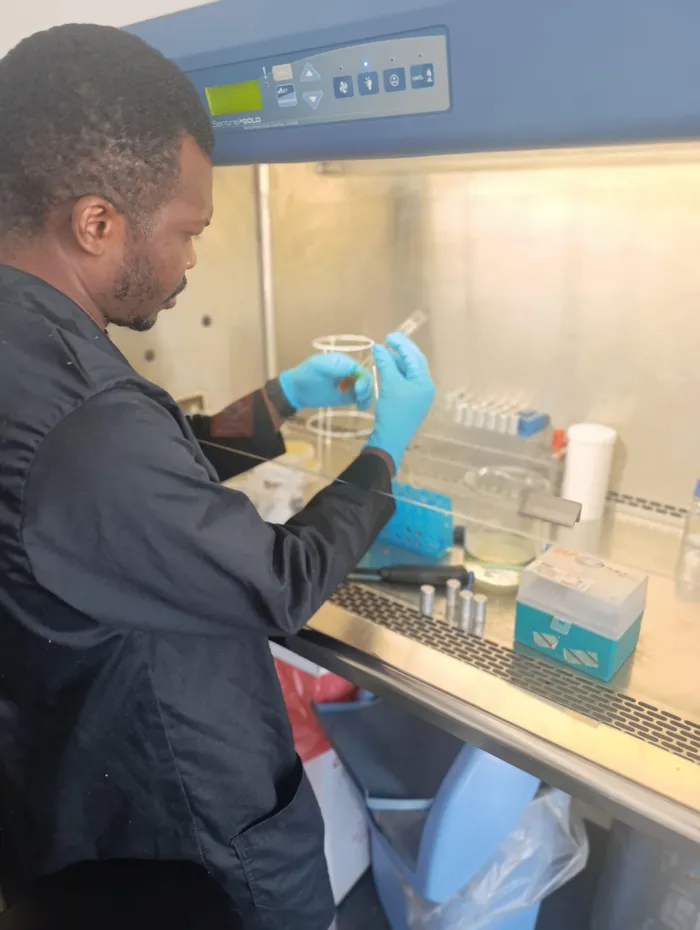
Dr Abraham Goodness Ogofure led the study that uncovered potent bioactive compounds in a plant many dismiss as a weed.
Image: Supplied
In a discovery that could reshape cancer treatment, researchers at the University of Johannesburg (UJ) have identified promising medical properties in an unlikely source: the common woolly nightshade (Solanum mauritianum), a plant often dismissed as an invasive weed.
Their findings, published in Nature Scientific Reports, reveal that extracts from the plant’s ripe fruit exhibit potent activity against both aggressive brain cancer cells and antibiotic-resistant bacteria.
Led by Dr Abraham Goodness Ogofure, alongside Dr Tendani Sebola and Professor Ezekiel Green (Leader) of the Molecular Pathogenic and Molecular Epidemiology Research Group (MPMERG), the study found that the ripe fruit contains 15 distinct bioactive compounds - three times more than the unripe fruit.
Among these, alkaloids and terpenoids account for over 50%, both known for their therapeutic potential.

The MPMERG team at the University of Johannesburg, whose groundbreaking study is rethinking the medical potential of the woolly nightshade plant.
Image: Supplied
“Through advanced LC-QTOF-MS/MS analysis, we detected - but have not yet isolated - these compounds,” clarifies Dr Ogofure. “While our findings show strong anticancer activity in the extracts against glioblastoma cells, we do not yet know which specific compounds are responsible for this effect. Encouragingly, the extracts had minimal impact on healthy lung cells, suggesting potential selectivity.”
The antibacterial results were equally significant, with the plant extract demonstrating activity against 11 harmful pathogens, including Staphylococcus aureus and E coli.
“These findings come at a crucial time, as antibiotic resistance is estimated to contribute to 5 million deaths globally each year,” notes Dr Ogofure.
Dr Sebola highlighted the broader implications: “It’s fascinating that a plant often removed as a nuisance may offer tools to tackle two of the most pressing global health threats: cancer and antimicrobial resistance.”
Looking ahead, the research team plans to isolate individual compounds from the extract, evaluate them against glioblastoma and other pathogens, and explore the effects of using consortia of these compounds in combination.
“This is just the beginning,” adds Professor Green. “This work is about more than just a plant - it’s about rethinking how we perceive biodiversity. Sometimes, what we consider weeds may hold the key to transformative medical breakthroughs."
Related Topics:
